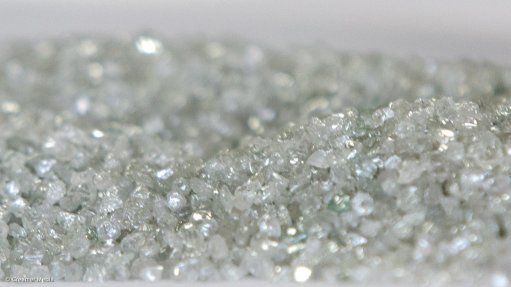
DIAMOND DELIGHT Despite Botswana’s attempts to diversify its economy, the economy remains heavily dependent on the diamond mining sector
Photo by: Duane Daws
While Botswana’s real economy expanded by an estimated 7.4% year-on-year in the second quarter of 2013, the mining sector showed the strongest sectoral growth, expanding by 15.6% year-on-year in the second quarter, stemming from a 19.2% year-on-year ramp-up in domestic rough-diamond production during the same period, according to Botswana's Central Statistics Office.
The Botswana Snapshot is a quarterly study compiled by privately owned political and economic research unit NKC Independent Economists and advisory services company KPMG; it provides an overview of the country’s economy in the third quarter of 2013.
The snapshot indicates that the economic policy of Botswana continues to be mapped out by the country’s seven-year national development plan and government’s long-term policy, ‘Vision 2016’, which promotes diversification of the economy while maintaining macroeconomic stability through a balanced budget over the medium term.
The study states that, in addition to existing opportunities in the dominant diamond sector, “vast potential” exists in the extractives sector, particularly in coal.
It also notes that the relocation of diamond major De Beers’ Diamond Trading Company’s (DTC’s) trading operations from London, in the UK, to Gaborone, in Botswana, at the end of last year, was a positive development for the country.
KPMG and NKC also highlighted in the report that, despite Botswana’s attempts to diversify its economy, the economy remains “heavily dependent” on the diamond mining sector.
The Botswana Snapshot identifies this as “a major constraint, as Botswana remains overly exposed to external global developments”.
It adds that the 2008 global financial crisis led to a sharp downturn in worldwide diamond demand and states that the subsequent decline in diamond prices directly correlates with the economic malaise in Botswana during 2008 to 2012.
The Rapaport Diamond Trade Index (RAPI), which is derived from the average asking price for the top 25 best-quality one-carat diamonds and is seen as a global benchmark, fell by 12.5% in the first half of 2012, but by December of that year, RAPI was trading flat.
However in 2013, RAPI recorded a 10.1% rise for 0.30 ct diamonds.